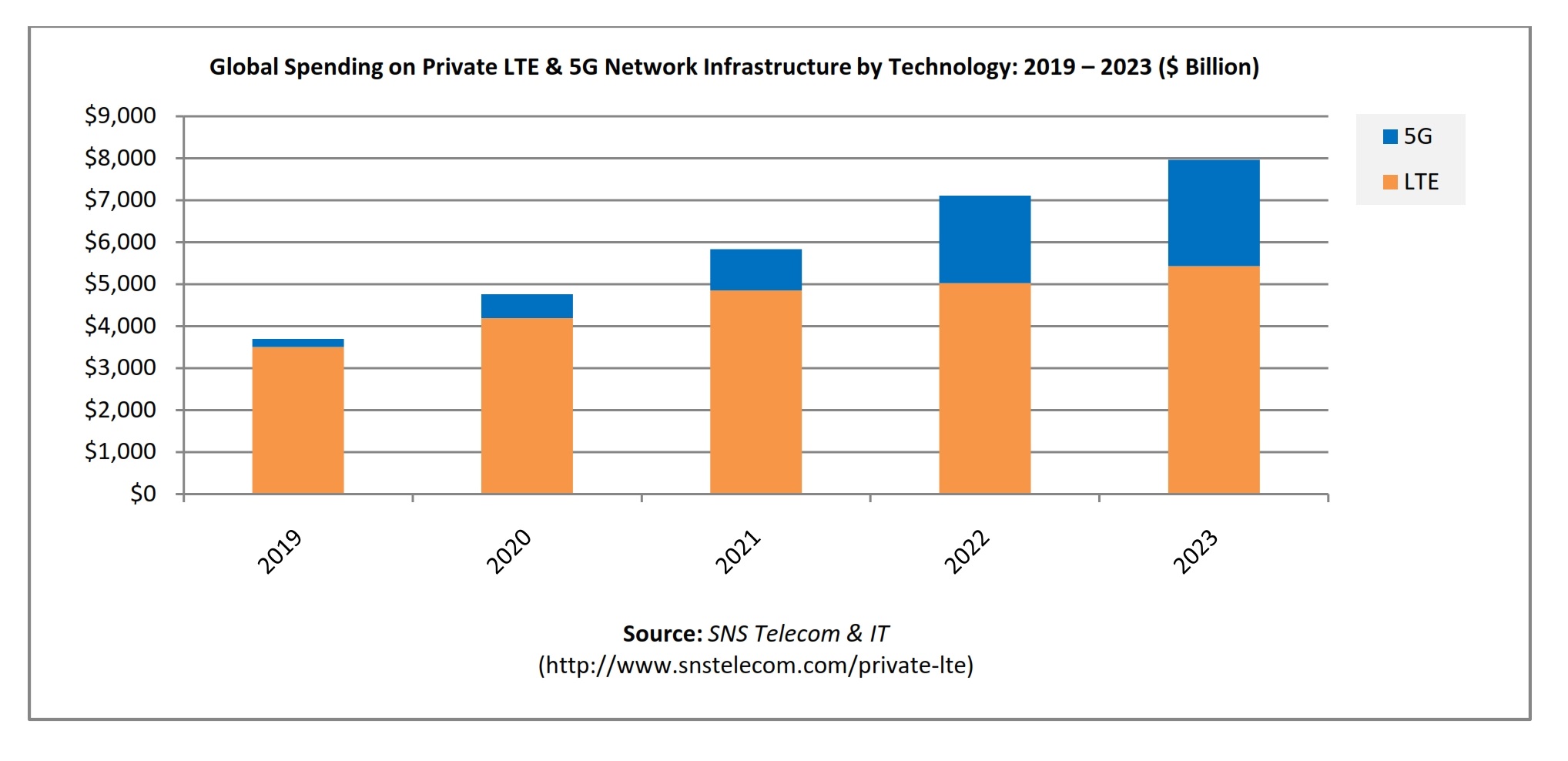› Forums › General › Discussions (General) › Private LTE & 5G network infrastructure an $8 Billion opportunity
Tagged: BizDev_G2, BizModel_G3, IoTNetwork_H5, IoTServices_V10, Security_S12, Tech_G15
- This topic has 1 voice and 0 replies.
-
AuthorPosts
-
-
December 29, 2019 at 1:26 pm #37866
#Discussion(General) [ via IoTGroup ]
With the standardization of features such as MCX (Mission-Critical PTT, Video & Data) services and URLCC (Ultra-Reliable Low-Latency Communications) by the 3GPP, LTE and 5G NR (New Radio) networks are rapidly gaining recognition as an all-inclusive critical communications platform for the delivery of both mission and business critical applications
The very first private 5G networks are also beginning to be deployed to serve a diverse array of usage scenarios spanning from connected factory robotics and massive-scale sensor networking to the control of AVGs (Automated Guided Vehicles) and AR/VR (Augmented & Virtual Reality). For example, Daimler’s Mercedes-Benz Cars division is establishing a local 5G network to support automobile production processes at its “Factory 56” in Sindelfingen, while the KMA (Korea Military Academy) is installing a dedicated 5G network in its northern Seoul campus to facilitate mixed reality-based military training programs – with a primary focus on shooting and tactical simulations.In addition, with the emergence of neutral-host small cells, multi-operator connectivity and unlicensed/shared spectrum access schemes, the use of private LTE and 5G networks in enterprise buildings, campuses and public venues is expected to grow significantly over the coming years. The practicality of spectrum sharing schemes such as the three-tiered CBRS (Citizens Broadband Radio Service) framework and Japan’s unlicensed sXGP (Shared Extended Global Platform) has already been proven with initial rollouts in locations such as corporate campuses, golf courses, race tracks, stadiums, airports and warehouses.

Expected to reach $4.7 Billion in annual spending by the end of 2020, private LTE and 5G networks are increasingly becoming the preferred approach to deliver wireless connectivity for critical communications, industrial IoT, enterprise & campus environments, and public venues. The market will further grow at a CAGR of 19% between 2020 and 2023, eventually accounting for nearly $8 Billion by the end of 2023
SNS Telecom & IT estimates that as much as 30% of these investments – approximately $2.5 Billion – will be directed towards the build-out of private 5G networks which will become preferred wireless connectivity medium to support the ongoing Industry 4.0 revolution for the automation and digitization of factories, warehouses, ports and other industrial premises, in addition to serving other verticals.
In addition to the high-profile FirstNet, South Korea’s Safe-Net, Britain’s ESN (Emergency Services Network) nationwide public safety LTE network projects, a number of other national-level engagements have recently come to light – most notably, the Royal Thai Police’s LTE network which is already operational in the greater Bangkok region, Finland’s VIRVE 2.0 mission-critical mobile broadband service, France’s PCSTORM critical communications broadband project, and Russia’s planned secure 450 MHz LTE network for police forces, emergency services and the national guard.
Other segments within the critical communications industry have also seen growth in the adoption of private LTE networks – with recent investments focused on mining, port and factory automation, deployable broadband systems for military communications, mission-critical voice, broadband and train control applications for railways and metro systems, ATG (Air-to-Ground) and airport surface wireless connectivity for aviation, field area networks for utilities, and maritime LTE platforms for vessels and offshore energy assets.
In the coming months and years, we expect to see significant activity in the 1.9 GHz sXGP, 3.5 GHz CBRS, 5 GHz and other unlicensed/shared spectrum bands to support the operation of private LTE and 5G networks across a range of environments, particularly enterprise buildings, campuses, public venues, factories and warehouses.
Read More..
Working BoT V3.0976805238 Build 23 Aug 2019
-
-
AuthorPosts
- You must be logged in to reply to this topic.
